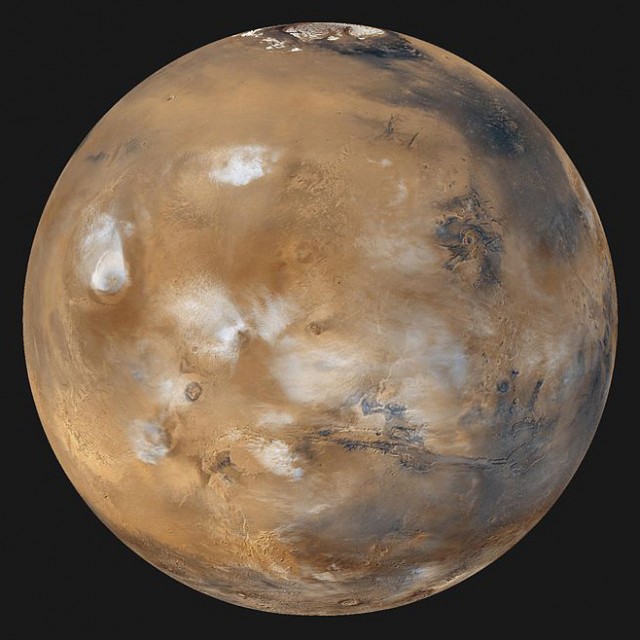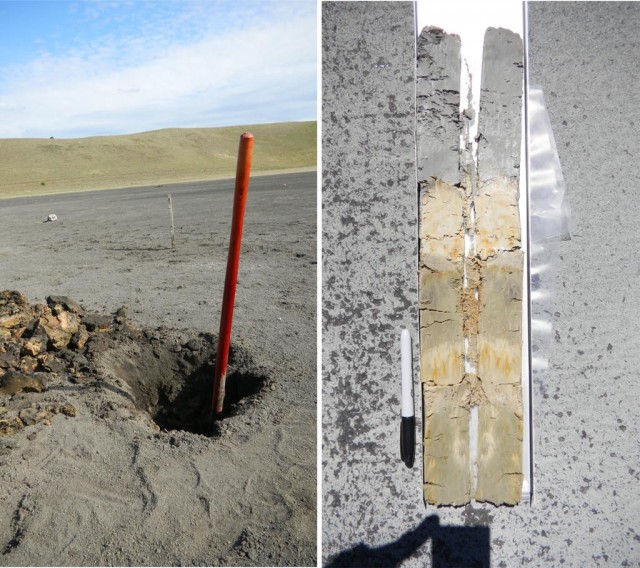Curiosity confirms that life can exist on Mars
- Transfer

Just 200 days after its main mission, NASA Curiosity rover confirmed that Mars could be inhabited by life. Now we know that once Mars was very similar to the Earth and, possibly, contains ancient bacteria.
This is new data on the results of the first Curiosity drilling.that took place in early February. Curiosity went deep into a rock called John Klein, it is flat and sinewy, just like stones in the riverbeds of us on Earth. The milled sample was then placed in the CheMin and SAM on-board laboratories, which are a combined set of spectrometers and provide very detailed information about the atomic composition of Martian rock and soil. Today, at a press conference, NASA shared the results of this analysis, and they very convincingly prove that once the conditions on Mars favored the genesis and maintenance of life.

To be precise, the results demonstrate that Yellowknife Bay, Curiosity's current location, was once filled with clear river water descending from the Gale Crater. Curiosity found nitrogen, sulfur, oxygen, phosphorus, carbon and hydrogen - the key ingredients for living here on Earth - in the rock sample of John Klein. “The range of chemical ingredients that we found in the sample is impressive and suggests compounds such as sulfates and sulfides, which indicates a possible source of chemical energy for micro-organisms,” says Paul Mahaffy, leader of the SAM team.
These results are particularly interesting in that they paint a picture of a humid environment that was surprisingly soft. Unlike the rest of Mars, it seems Yellowknife Bay wasn’t too salty, acidic or oxidizing - just right for the birth of life.

A reservoir in Australia, which, according to NASA, is very similar to Yellowknife Bay on Mars.
Briefly - apparently, once the surface of Mars was very similar to the Earth. Just think about it. (Also see: Another blue planet: what Mars Billions could look like years ago ).
The main question now, of course, is whether life has ever been on Mars, and if so, can it still exist beneath its surface? Here on Earth, it has been repeatedly proven that life finds a way to survive in the most severe conditions. If the conditions for abiogenesis (spontaneous emergence of life from inorganic matter) on Earth and on Mars were the same, then where is the guarantee that the same ultra-hardy microbes do not develop, and have not been in the crust of Mars for billions of years? In order to find the answer to both of these questions, Curiosity or another rover must go deep into Mars and find the fossils or living organisms themselves.

The Opportunity rover was only equipped with a rock abrasion device (left), while the Curiosity could drill neat holes with an impact drill
Continuing his research, Curiosity will be in Yellowknife Bay for many weeks, testing more images to confirm the conclusions presented today. NASA is also concerned about the problem with the main Curiosity on-board computer, which has detected errors in memory and needs to be replaced with a spare fault-tolerant computer . The past few weeks have been spent bringing Curiosity systems back to normal and trying to fix the main computer.
